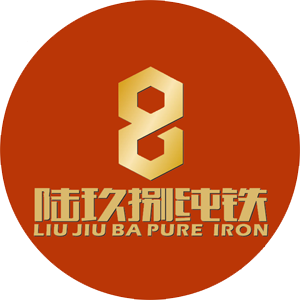Liu jiuba pure iron
Pure Iron Industry's "The Imperial Concubine Replaces the Crown Prince": A Dark Humor Expose of the Industry
I. A Spy Thriller-Like Inquiry Call
"Hello, I need to purchase a sample of TISCO pure iron. What is the minimum order quantity?" This ordinary inquiry call received last week was like a lancet slicing open the veil of the industrial procurement market. When the customer hesitantly revealed that "the sample needs to be genuine, but other materials will be used for mass production," I momentarily thought I had stumbled into a spy thriller set — this was clearly 007 placing an order with Q.
Veterans of the steel industry know that this routine of "using TISCO for testing, but knock-offs for mass production" has become the standard operating procedure (SOP) for some companies. They are well-versed in the survival philosophy of "speaking human language to humans, and ghost language to ghosts": when facing end-users, they are process masters filled with professional jargon, but when it comes to procurement, they turn into cost-cutting "killers."
II. The Dark Industrial Chain of a "Double Life"
In this industrial absurdity, the actors each have their unique skills. Some middlemen transform into "material plastic surgeons," presenting TISCO pure iron as the "bare-faced ID photo" during testing, but switching to a cheaper "beautified version" for mass production. According to incomplete statistics, such "face-changing" operations can save 20-40% of procurement costs — of course, at the expense of product performance, where the "beauty filter" can collapse at any moment.
Even more astonishing is the "fake certificate industry" within the supply chain. During a surprise inspection, it was discovered that the number of copies of TISCO material certification documents in a company's warehouse was more than three times the actual purchase quantity. This reminds one of the dark humor of "one roasted duck with three quarantine labels" in the vegetable market, only this time the protagonist is industrial raw materials.
III. The Butterfly Effect Behind the "Four Sins"
This charade of "bait and switch" is akin to the modern industrial version of the "butterfly effect." When the first piece of inferior pure iron enters the production line, the chain reaction can shake the entire industry chain: the technological achievements refined through countless trials in TISCO laboratories become the "wedding dress" for others to deceive; the test reports received by end-users turn into meaningless "performance art"; and the grand blueprint of Made in China 2025 is being eaten away by these "impostors" with tiny holes.
Even more absurd is the "magical realism" in the economic ledger: every penny saved by using inferior materials will eventually be repaid twofold in after-sales repairs, brand damage, and industrial upgrades. It's like using a nine-yuan Rolex watch with free shipping for business negotiations — the money saved isn't even enough to buy a fig leaf.
IV. Three Strategies to Break the Deadlock: Establishing "Face Recognition" in the Materials World
In the face of this farce of "the imperial concubine replaces the crown prince," we need to establish a "face recognition system" for material traceability. Firstly, implement the principle of "not showing one's hand until the time is right": material certificates should only be issued with genuine procurement records, so that each certificate carries the temperature of steel. Secondly, establish a "universal supervision" mechanism, welcoming end-users to become "citizen detectives," with one phone call exposing Li Gui's true colors. Finally, create an ecosystem where "good money drives out bad," allowing honest companies to enjoy VIP channels and making opportunists feel the power of "social death."
Conclusion: As we stand on the threshold of Industry 4.0 and look back, those companies still playing the "testing game" are like accountants who insist on using an abacus to calculate aerospace trajectories. History will ultimately prove that true smart manufacturing is not just fancy rhetoric on PPTs, but sincerity infused into every gram of material. After all, what should be crafted from TISCO pure iron is not just cold data on test reports, but rather the unyielding backbone of Made in China.
最新动态
- Pure Iron Industry's "The Imperial Concubine Replaces the Crown Prince": A Dark Humor Expose of the Industry 2025-03-02 21:02:49
- High-quality pure iron materials boost intelligent manufacturing industry 2025-02-21 16:32:07
- Notice of Commencement of Operations 2025-02-05 15:20:50
- Notice of Spring Festival Holiday 2025-01-17 08:00:00
- Taiyuan Liujiuba Pure Iron Co., Ltd 2025-01-12 23:27:04
E-mail:chuntie698@163.com


